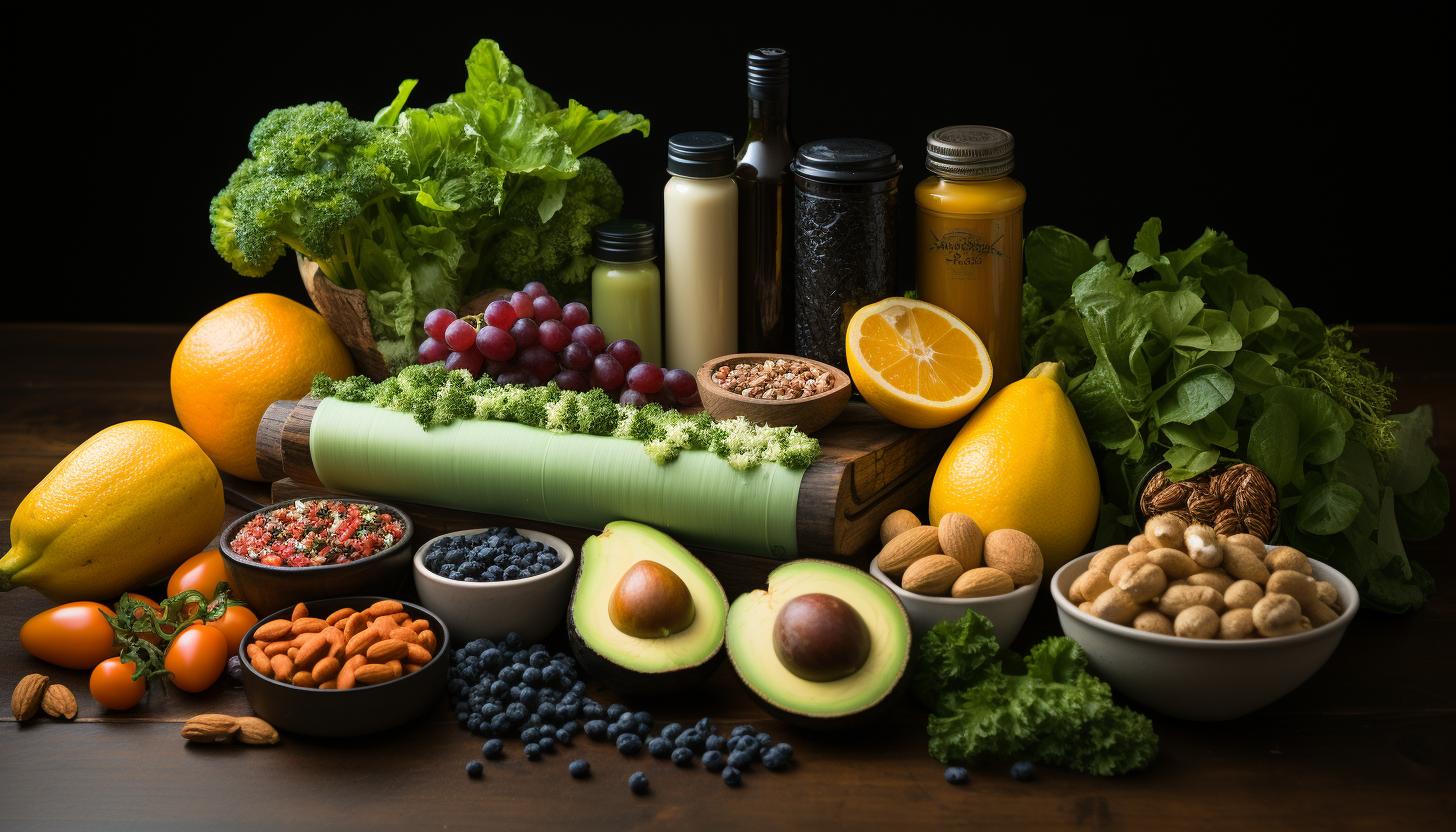Interval Training for Endurance: Increasing Stamina and VO2 Max

Are you tired of feeling winded after just a few minutes of intense exercise? Do you dream of having the stamina to push through longer workouts and achieve new levels of performance? Look no further than interval training for endurance.
By incorporating this scientifically-backed technique into your routine, you can increase both your stamina and VO2 max. In this article, we will dive into the science behind interval training, explore its benefits for endurance athletes, and provide strategies for designing an effective interval training program.
Get ready to take your fitness to the next level!
The Science Behind Interval Training

Interval training is a method that alternates between high-intensity and low-intensity exercises to improve endurance and VO2 max. This type of training has been extensively studied and has shown numerous benefits for athletes looking to increase their stamina.
One key benefit of interval training is its ability to improve cardiovascular fitness more effectively than steady state cardio. High-Intensity Interval Training (HIIT) has been found to elicit greater improvements in VO2 max compared to traditional steady state cardio exercises. This is because the intense bursts of exercise followed by short recovery periods push your heart and lungs to work harder, leading to increased oxygen consumption and improved aerobic capacity.
Another advantage of interval training is its time efficiency. Research suggests that HIIT workouts can produce similar or even better results in less time than traditional endurance activities. For instance, a study comparing 20 minutes of HIIT with 40 minutes of steady-state exercise found that both groups experienced similar improvements in aerobic fitness.
Incorporating interval training into your endurance training regimen can provide significant benefits for athletes looking to enhance their performance. By challenging your body with alternating intensities, you can maximize your cardiovascular fitness, improve VO2 max, and achieve higher levels of endurance. Let’s dive deeper into the specific benefits of interval training for endurance athletes.
Benefits of Interval Training for Endurance Athletes

One major advantage of interval workouts is that they help endurance athletes enhance their overall performance. Interval training involves alternating between periods of high-intensity exercise and periods of rest or low-intensity exercise. This type of training has been shown to improve various aspects of performance, including increasing stamina and preventing plateau.
Research has consistently demonstrated that interval training can lead to significant improvements in endurance performance. A study published in the Journal of Applied Physiology found that runners who incorporated high-intensity intervals into their training program experienced greater improvements in their VO2 max, a key marker of aerobic capacity, compared to those who performed steady-state moderate intensity exercise alone. This increase in VO2 max allows athletes to deliver more oxygen to their muscles during intense physical activity, leading to improved endurance and performance.
Interval training also helps prevent plateaus by constantly challenging the body with varying levels of intensity. By regularly altering the duration and intensity of intervals, athletes can continue to make progress and avoid reaching a point where further improvement becomes difficult.
Designing an Effective Interval Training Program

When designing an effective interval training program, you should focus on varying the intensity and duration of your workouts to continuously challenge your body and maximize performance gains. By manipulating these two variables, you can create a training plan that targets specific energy systems and improves both aerobic and anaerobic fitness.
To design an interval training program that optimizes training intensity and interval duration, consider the following:
– Training Intensity:
– Vary the intensity of your intervals by incorporating different heart rate zones or perceived exertion levels.
– Utilize high-intensity intervals (above lactate threshold) to improve anaerobic capacity and VO2 max.
– Include low-intensity recovery intervals to allow for active recovery and enhance endurance.
– Interval Duration:
– Experiment with different interval durations, ranging from short bursts of intense effort (e.g., 30 seconds) to longer sustained efforts (e.g., 4 minutes).
– Incorporate work-to-rest ratios that match the desired physiological adaptations.
– Gradually increase the duration of intervals over time to progressively overload your body.
Maximizing VO2 Max Through Interval Training

To optimize your workout and achieve maximum gains, it’s crucial to strategically manipulate the intensity and duration of your intervals. Interval training is a proven method for improving anaerobic capacity and maximizing VO2 max.
VO2 max refers to the maximum amount of oxygen your body can utilize during intense exercise. By pushing yourself to higher intensities during interval training, you can increase your aerobic threshold and enhance your body’s ability to deliver oxygen to working muscles.
One key factor in interval training is the manipulation of intensity levels. Varying the intensity of your intervals allows for targeted improvements in different energy systems within your body. High-intensity intervals, performed at 80-90% of your maximum effort, help improve anaerobic capacity by increasing lactate threshold and promoting efficient energy production without relying solely on oxygen.
Incorporating shorter, more intense intervals into your routine can also lead to greater adaptations in VO2 max. Research has shown that repeated bouts of high-intensity exercise followed by short recovery periods elicit significant increases in VO2 max compared to continuous moderate-intensity exercise.
Nutrition and Recovery Strategies for Endurance Interval Training

To optimize your performance during endurance interval training, it’s essential to fuel your body with the right nutrients and prioritize adequate recovery. Here are some key strategies to consider:
– Pre-workout fueling: Before your training session, it’s important to consume a balanced meal or snack that includes carbohydrates, protein, and healthy fats. This will provide you with the necessary energy to sustain intense exercise and help prevent muscle breakdown.
– Include complex carbohydrates like whole grains and fruits to provide a steady release of glucose for sustained energy.
– Opt for lean sources of protein such as chicken or fish to support muscle repair and growth.
– Incorporate healthy fats from sources like avocados or nuts to enhance satiety and promote nutrient absorption.
– Post-workout supplementation: After completing your endurance interval training, replenishing your body’s glycogen stores is crucial for optimal recovery and future performance. Consider incorporating the following supplements:
– Branched-chain amino acids (BCAAs): BCAAs can help reduce muscle soreness and aid in muscle repair by providing essential amino acids.
– Whey protein: Consuming whey protein within 30 minutes of finishing your workout can promote muscle recovery and synthesis.
– Electrolytes: Replenishing electrolytes lost through sweat is vital for hydration balance and overall performance.
By implementing these nutrition and recovery strategies into your endurance interval training routine, you can maximize your stamina, improve VO2 max, and achieve better overall performance.
Remember that individual needs may vary, so it’s always best to consult with a registered dietitian or sports nutritionist for personalized recommendations.
Conclusion
So, you’ve made it to the end of this fascinating article on interval training for endurance. Congratulations!
You now have all the evidence-based, research-oriented knowledge you need to take your stamina and VO2 max to new heights.
With the science behind interval training, the benefits it offers for endurance athletes, and effective program design tips at your disposal, you’re ready to conquer any race or challenge that comes your way.
Just remember to fuel up with proper nutrition and prioritize recovery strategies.
Now go forth and leave everyone else in your dust!





